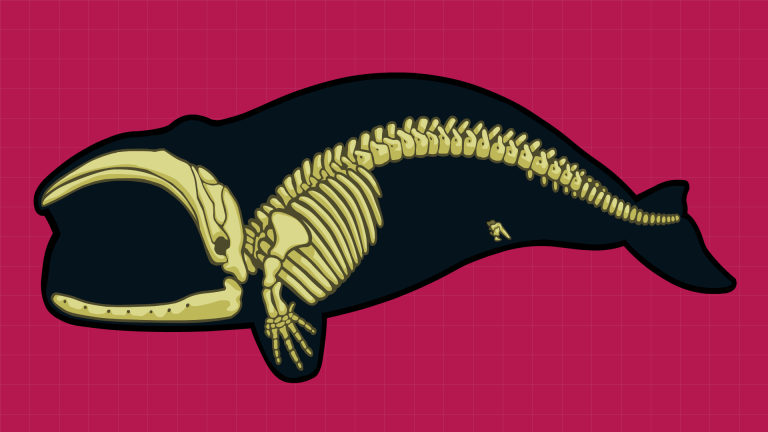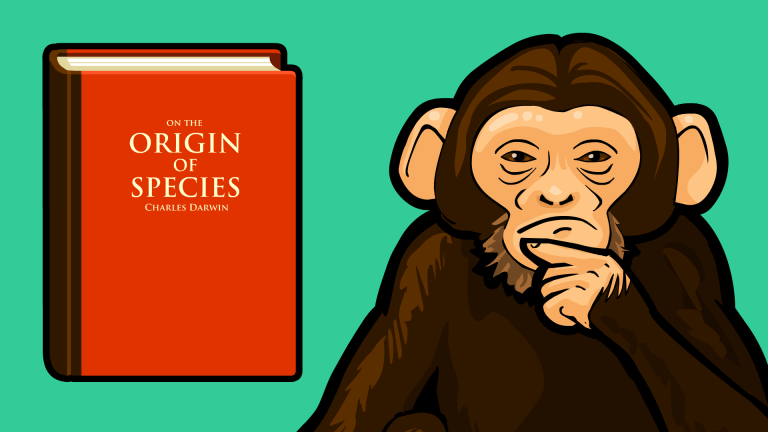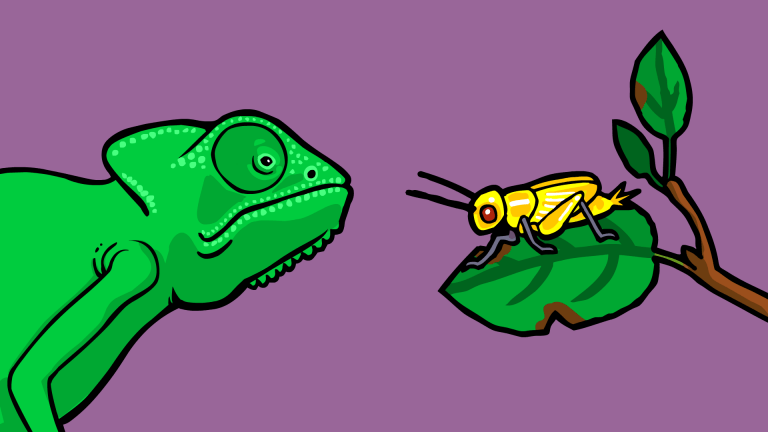Overview
When many people think of evolution by natural selection, they think “Survival of the Fittest”. This phrase is often interpreted to mean “only the strong shall survive” but when you look at how common tiny microbes are, that interpretation is clearly not true. What does survival of the fittest really mean? Find out here!
Papers about measuring fitness:
Transcript
When Darwin wrote his famous book about the process of evolution by Natural Selection, he filled 502 pages with rich insight and careful observations.
In spite of all his care, today when people think of Natural Selection, a single phrase often comes to mind:
Survival of the fittest!
It’s a bumper sticker description of the process of Natural Selection.
You might be surprised to hear that this phrase wasn’t actually in the first edition of Darwin’s book. Instead it was coined by one of Darwin’s early fans and it stuck. Unfortunately the catch phrase has caused confusion over the years.
Its emphasis on “Survival” suggests that evolution is all about either living or dying. In reality, evolution has less to do with death and more to do with how well an organism reproduces – more specifically, how well an organism passes its traits onto future generations.
Dying before reproducing IS a sure way not to spread your genes, but death is not the only way to fail.
If badger mother A, raises 3 pups to maturity while badger mother B only raises 2, badger A is the evolutionary winner (at least in this round of the struggle for existence) even if she then promptly dies while badger B is somehow granted immortality.
From a human perspective, death might seem essential for evolution. Each of us will die whether or not we have children, but the same is not true for all life forms. Bacteria reproduce by copying their DNA and then splitting in two. If we assume they’ve been reproducing in a similar way since the beginning, this means that any bacterium you meet today has never had a single ancestor die since the origin of life!
That said, any given individual (human or bacteria) is only temporary. The things that really “survive” in survival of the fittest, are an organism’s heritable traits. We now know that many traits are coded for by genes, sequences of information usually stored in DNA, sometimes RNA, that are physically passed from parent to child during reproduction.
Next we have the word “fittest”.
Is this supposed to mean “physically fit” as this image falsely suggests? No. Maybe it means “Strongest” or “largest” but, If that’s the case, how did tiny mammals survive the extinction of the mighty T. rex? Clearly it is not true to say that only the strong shall survive.
Maybe “fittest” here means “most indestructible”? If that’s the case, solid rocks seem to be among the fittest things on Earth. Surely we’ve misunderstood something important.
As Darwin so famously pointed out, the “fittest” traits are those which best help an organism pass those traits onto the next generation. Traits that might be a great fit in one environment, might not be a horrible fit in another. Fitness is context dependent.
If you plan to master the field of evolutionary biology, you should probably study the diverse ways in which fitness is talked about, modeled, and measured by researchers. That said, if you really just want a clear, foundational understanding of evolution, there is a different “bumper sticker” description of Natural Selection that I find helpful:
“Those which happen to be better reproducers, tend to reproduce better.”
You might be thinking this is so basic it feels silly. You are not alone.
When one of Darwin’s colleagues first read his book he responded by saying “how extremely stupid not to have thought of that [myself]!”
Simple as Natural Selection might seem, when combined with heritable reproduction (the ability of an organism to pass its traits on to its offspring) and combined with variation (variation caused by things like random mutation, recombination and so on) the end result is the process of biological evolution! A process so powerful that it alone, so far as we can tell, produced the eyes you’re using to watch this video, and the brain you’re using to understand these words:
“Those which happen to be better reproducers, tend to reproduce better.”
When I say “Those which happen to be better reproducers” I mean that some individuals will be unusually good at reproduction because they happen to have undergone a random mutation or other heritable modification that increased their odds of survival and reproduction within their specific environment.
When I say they “tend to reproduce better” I mean that, on average they will reproduce better. A bit of bad luck can still take you out of the game no matter how well matched you otherwise are to your environment.
Okay. Let us test drive this bumper sticker with some real-world questions: Why are there more crows alive today than Peacocks?
Because those birds which happen to be better reproducers, tend to reproduce better.
Why is a new coronavirus strain becoming more common than the original coronavirus strain?
Because those viruses which happen to be better reproducers, tend to reproduce better. That is it!
Now, obviously it requires serious research to uncover the details allowing one bird species or one virus strain to reproduce better than another, but our seemingly silly bumper sticker does point our brains in the right direction. No fluff, no distractions.
Those which happen to be better reproducers (within a specific environment), tend to reproduce better (within that environment).




